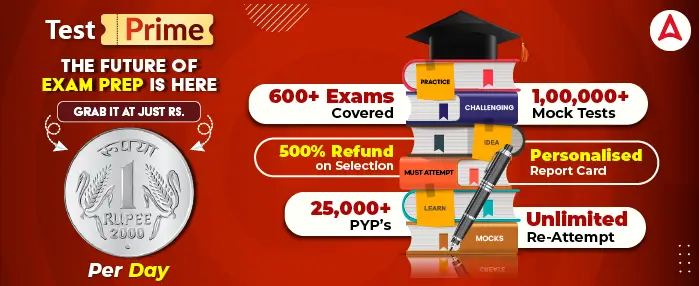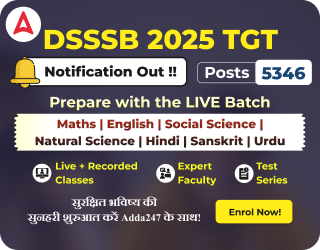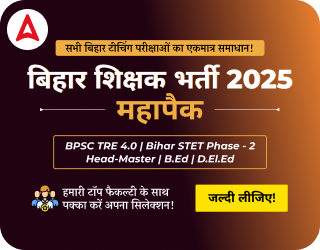Table of Contents
The Graduate Aptitude Test-Biotechnology (GAT-B) 2025 cut-off marks has been released on the official website, with separate qualifying scores for each category. As the national entrance exam for postgraduate biotechnology programs across India, Candidate can download their GAT B Result 2025 along with their category wise cut off marks. This article provides detailed insights into the GAT-B 2025 cut-offs, Qualifying Marks and releated details in below article
GAT Biotechnology Cut Off 2025: Overview
The GAT-B cut-off is the minimum qualifying score required for admission to top biotechnology programs in India. Here’s a quick snapshot of what you need to know about the 2025 cut-off trends. The Graduate Aptitude Test-Biotechnology (GAT-B) 2025 is a national-level entrance examination conducted by the National Testing Agency (NTA) for admissions into postgraduate biotechnology and life sciences programs supported by the Department of Biotechnology (DBT), Government of India.
- Exam Date: 20 April 2025
- Conducting Body: National Testing Agency (NTA)
- Result: GAT B Result 2025
- Purpose: Admission to DBT-supported PG programs in:
- Biotechnology
- Life Sciences
- Agricultural Biotechnology
- Bioinformatics
- Related interdisciplinary fields
GAT B Cut Off 2025 Category-wise
The GAT-B 2025 cut-offs show General category candidates require 60.42% (145 marks) to qualify, while OBC-NCL (43.54%) and EWS (43.13%) follow closely. SC/ST candidates have lower thresholds at 33.33% (80 marks) and 25.21% (60.5 marks) respectively, with PwBD at 25.83% (62 marks). These tiered cut-offs balance merit with inclusive policies under reservation norms. The data reflects NTA’s standardized evaluation for DBT-supported biotechnology programs.
GAT Biotechnology Previous Year Cut-Off (2020-2024)
The Graduate Aptitude Test-Biotechnology (GAT-B) cut-off marks serve as the golden threshold for aspirants seeking admission to India’s premier biotechnology programs. As you prepare for GAT-B 2025, analyzing previous year cut-offs becomes crucial to:
| Year | General | EWS | OBC-NCL | SC | ST | PwD |
|---|---|---|---|---|---|---|
| 2024 | 127 | 91 | 89.5 | 65 | 60 | 64 |
| 2023 | 127.5 | 84.5 | 88 | 65 | 60.5 | 64 |
| 2022 | 112 | 65 | 71 | 60 | 60 | 60 |
| 2021 | 121.5 | 121.5 | 103.5 | 67.5 | 60 | 60 |
| 2020 | 123.5 | 123.5 | 100.5 | 60 | 60 | 60 |
GAT B 2025 College Wise Seat Matrix & Expected Cutoffs
Below is the expected GAT-B 2025 college-wise seat matrix and general category cutoff marks based on the previous year’s trends and institute popularity. The college wise list for GAT B 2025 College Wise Seat Matrix & Expected Cutoffs has been provided below.
| S. No. | Institution | Program | Total Seats | Expected Cutoff Marks |
|---|---|---|---|---|
| 1 | Jawaharlal Nehru University (JNU), New Delhi | M.Sc. Biotechnology | 30 | 178–190 |
| 2 | IIT Indore | M.Sc. Biotechnology | 10 | 180–190 |
| 3 | Savitribai Phule Pune University, Maharashtra | M.Sc. Biotechnology | 30 | 170–180 |
| 4 | University of Hyderabad, Telangana | M.Sc. Biotechnology | 30 | 175–185 |
| 5 | Banaras Hindu University (BHU), Uttar Pradesh | M.Sc. Biotechnology | 30 | 175–185 |
| 6 | BHU, Uttar Pradesh | M.Sc. Molecular & Human Genetics | 30 | 175–185 |
| 7 | Pondicherry University | M.Sc. Biotechnology | 30 | 165–175 |
| 8 | University of Mysore, Karnataka | M.Sc. Biotechnology | 30 | 165–175 |
| 9 | GIET University, Odisha | M.Sc. Biotechnology | 10 | 160–170 |
| 10 | Central University of Rajasthan | M.Sc. Biotechnology | 10 | 155–165 |
| 11 | Guru Angad Dev Veterinary and Animal Sciences University, Punjab | M.Sc. Molecular Biology & Biotechnology (Animal Biotech) | 10 | 150–160 |
| 12 | North Eastern Hill University (NEHU), Meghalaya | M.Sc. Biotechnology | 30 | 145–155 |
| 13 | Central University of Jammu | M.Sc. Biotechnology | 10 | 150–160 |
| 14 | Central University of Tamil Nadu | M.Sc. Biotechnology | 10 | 150–160 |
| 15 | Guru Nanak Dev University, Punjab | M.Sc. Biotechnology | 30 | 160–170 |
| 16 | Himachal Pradesh University | M.Sc. Biotechnology | 30 | 155–165 |
| 17 | Amity University, Haryana | M.Sc. Biotechnology | 10 | 150–160 |
| 18 | Banasthali Vidyapith, Rajasthan | M.Sc. Biotechnology (Women Only) | 30 | 150–160 |
| 19 | Alagappa University, Tamil Nadu | M.Sc. Biotechnology | 10 | 150–160 |
| 20 | Bharathiar University, Tamil Nadu | M.Sc. Medical Biotechnology | 10 | 160–170 |
| 21 | Jaypee University of IT, Himachal Pradesh | M.Sc. Biotechnology | 10 | 160–170 |
| 22 | Institute of Advanced Research, Gujarat | M.Sc. Biotechnology | 10 | 150–160 |
| 23 | National College, Tamil Nadu | M.Sc. Biotechnology | 10 | 145–155 |
| 24 | Rama Devi Women’s University, Odisha | M.Sc. Biotechnology (Women Only) | 10 | 145–155 |
| 25 | University of Jammu | M.Sc. Biotechnology | 20 | 150–160 |
| 26 | University of Kashmir | M.Sc. Biotechnology | 20 | 145–155 |
| 27 | Utkal University, Odisha | M.Sc. Biotechnology | 25 | 155–165 |
| 28 | Visva-Bharati University, West Bengal | M.Sc. Biotechnology | 20 | 155–165 |
| 29 | Baba Ghulam Shah Badshah University, J&K | M.Sc. Bio-resources Biotechnology | 20 | 145–155 |
| 30 | Goa University | M.Sc. Marine Biotechnology | 30 | 155–165 |
| 31 | NITTE University, Karnataka | M.Sc. Marine Biotechnology | 10 | 145–155 |
| 32 | PGIMER, Punjab | M.Sc. Medical Biotechnology | 10 | 165–175 |
| 33 | Osmania University, Telangana | M.Sc. Molecular & Human Genetics | 10 | 160–170 |
| 34 | JNU, Delhi | M.Sc. Computational & Integrative Sciences | 15 | 175–185 |
| 35 | University of Delhi | M.Sc. Plant Molecular Biology & Biotechnology | 10 | 165–175 |
| 36 | Assam Agricultural University | M.Sc. Molecular Biology & Biotechnology | 11 | 155–165 |
| 37 | ICT Mumbai | M.Tech. Bioprocess Technology | 30 | 165–175 |
| 38 | ICT Mumbai | M.Tech. Food Biotechnology | 10 | 160–170 |
| 39 | ICT Mumbai | M.Tech. Pharmaceutical Biotechnology | 10 | 165–175 |
| 40 | IIIT Delhi | M.Tech. Computational Biology | 15 | 175–185 |
| 41 | Pondicherry University | M.Tech. Computational Biology | 30 | 165–175 |
| 42 | MAKAUT, West Bengal | M.Tech. Biotechnology | 30 | 155–165 |
| 43 | Jaypee Inst. of IT, Noida | M.Tech. Biotechnology | 10 | 160–170 |
| 44 | Guru Gobind Singh Indraprastha University, Delhi | M.Tech. Industrial Biotechnology | 10 | 160–170 |
| 45 | Jamia Hamdard, Delhi | M.Tech. Biotechnology | 10 | 160–170 |
| 46 | Cotton University, Assam | M.Sc. Molecular Biology & Biotechnology | 10 | 155–165 |
| 47 | Tezpur University, Assam | M.Sc. Molecular Biology & Biotechnology | 30 | 160–170 |
| 48 | Assam Agricultural University | M.V.Sc. Veterinary Biotechnology | 10 | 150–160 |
| 49 | Nanaji Deshmukh Veterinary Science Univ., MP | M.Sc. (Animal Biotechnology) | 5 | 145–155 |
| 50 | Nanaji Deshmukh Veterinary Science Univ., MP | M.V.Sc. Veterinary Biotechnology | 5 | 145–155 |
| 51 | IIS (Deemed University), Jaipur | M.Sc. Biotechnology | 10 | 145–155 |
| 52 | Central University of Tamil Nadu | M.Sc. Biotechnology | 10 | 145–155 |
| 53 | University of Delhi | M.Sc. Plant Molecular Biology & Biotechnology | 10 | 150–160 |
| 54 | Assam Agricultural University | M.Sc. Molecular Biology & Biotechnology | 11 | 145–155 |
| 55 | G.B. Pant Univ. of Agriculture & Tech., Uttarakhand | M.Sc. (Agri) Molecular Biology & Biotechnology | 15 | 155–165 |
| 56 | Punjab Agricultural University | M.Sc. (Agri) Molecular Biology & Biotechnology | 10 | 155–165 |
| 57 | IGKV, Chhattisgarh | M.Sc. (Ag) Plant Molecular Biology & Biotechnology | 30 | 145–155 |
| 58 | Kerala Agricultural University | M.Sc. Molecular Biology & Biotechnology | 15 | 155–165 |
| 59 | Tamil Nadu Agricultural University | M.Sc. (Ag.) Molecular Biology & Biotechnology | 20 | 145–155 |
| 60 | UAS Bangalore | M.Sc. (Agri) Molecular Biology & Biotechnology | 13 | 165–175 |
| 61 | UAS Dharwad | M.Sc. (Ag.) Molecular Biology & Biotechnology | 12 | 160–170 |
| 62 | V.D College of Agriculture Biotech, Latur | M.Sc. Molecular Biology & Biotechnology | 30 | 175–185 |
| 63 | Dr. Rajendra Prasad Central Agri. Univ., Bihar | M.Sc. (Ag.) Molecular Biology & Biotechnology | 10 | 165–175 |
| 64 | Sher-e-Kashmir Univ. of Agri. Sciences & Tech., Jammu | M.Sc. (Agri) Molecular Biology & Biotechnology | 10 | 155–165 |
| 65 | Rani Lakshmi Bai Central Agri. Univ., UP | M.Sc. Agricultural Biotechnology | 10 | 165–175 |
| 66 | CUSAT, Kerala | M.Tech. Marine Biotechnology | 20 | 160–170 |
| 67 | IIIT-Delhi | M.Tech. Computational Biology | 15 | 165–175 |
| 68 | ICT Mumbai | M.Tech. Bioprocess Technology | 30 | 175–185 |
| 69 | ICT Mumbai | M.Tech. Food Biotechnology | 10 | 165–175 |
| 70 | ICT Mumbai | M.Tech. Pharmaceutical Biotechnology | 10 | 155–165 |
| 71 | K.S. Rangasamy College of Tech., Tamil Nadu | M.Tech. Biotechnology | 10 | 160–170 |
| 72 | MAKAUT, West Bengal | M.Tech. Biotechnology | 30 | 160–170 |
| 73 | Pondicherry University | M.Tech. Computational Biology | 30 | 160–170 |
| 74 | Vel Tech Rangarajan Inst., Tamil Nadu | M.Tech. Biotechnology (Industrial Biotech) | 10 | 155–165 |
| 75 | Guru Gobind Singh Indraprastha Univ., Delhi | M.Tech. Industrial Biotechnology | 10 | 160–170 |
| 76 | Jamia Hamdard, Delhi | M.Tech. Biotechnology | 10 | 155–165 |
| 77 | Jaypee Inst. of IT, Noida | M.Tech. Biotechnology | 10 | 160–170 |
| 78 | Assam Agricultural University | M.V.Sc. Veterinary Biotechnology | 10 | 175–185 |
| 79 | Nanaji Deshmukh Veterinary Science Univ., MP | M.V.Sc. Veterinary Biotechnology | 5 | 170–180 |
Factors Determining GAT Biotechnology Cut Off
The GAT-B cut-off marks are influenced by multiple dynamic factors that can significantly impact the qualifying scores each year. Understanding these elements helps aspirants set realistic targets and strategize their preparation effectively. To determine the GAT Biotechnology cut off, several factors come into play:
- Number of Applicants: The total number of candidates applying for GAT Biotechnology affects the competitiveness of the exam and influences the cut off.
- Difficulty Level of the Exam: The complexity of the exam questions directly impacts the average performance of candidates, thereby affecting where the cut off is set.
- Previous Year Cut Off Trends: Historical data on previous years’ cut offs provides insights into the expected range for the current year, considering variations in applicant performance and exam difficulty.
- Seat Availability: The number of seats available in Biotechnology programs influences how stringent or relaxed the cut off may be, as more competitive programs tend to have higher cut offs.




 CSIR NET Life Science Cut Off Marks, Cat...
CSIR NET Life Science Cut Off Marks, Cat...
 WB SET Cut Off 2025, Check Minimum Quali...
WB SET Cut Off 2025, Check Minimum Quali...
 EMRS Cut Off 2025, Check Expected and Pr...
EMRS Cut Off 2025, Check Expected and Pr...












